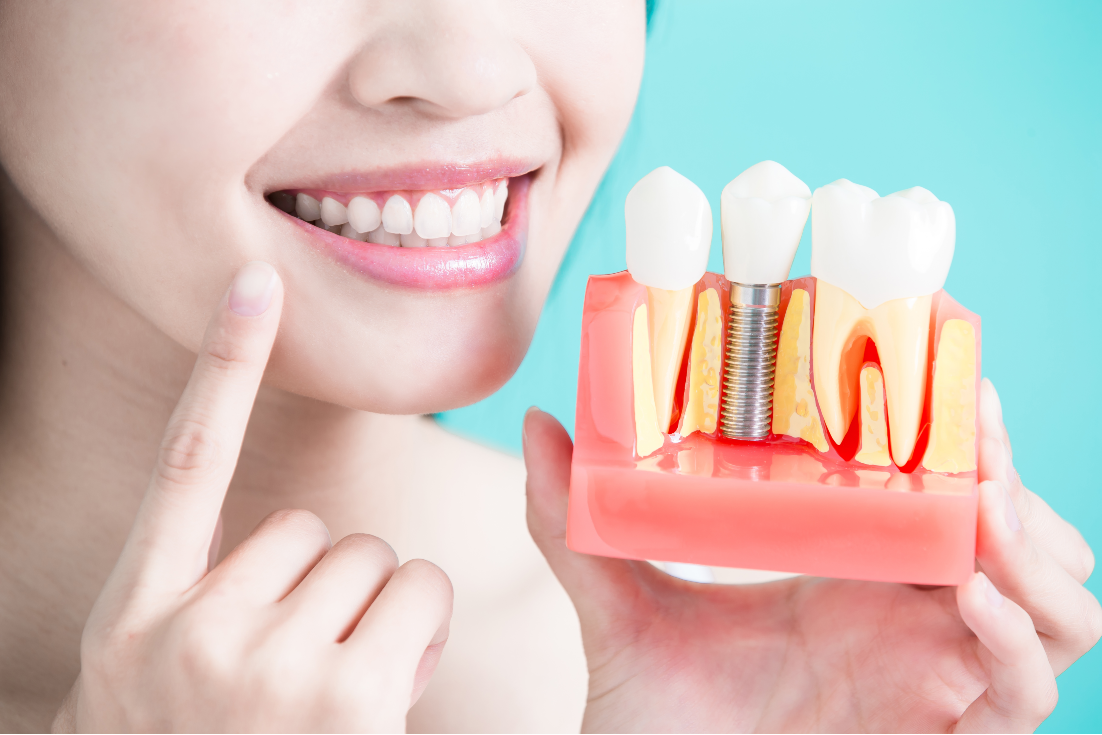 An estimated two in three Americans are missing one or more teeth, and a shocking 30 million Americans are missing all of their teeth in one or both jaws. Given the role a healthy smile plays in one’s self-confidence and quality of life, tooth loss can significantly impact a patient’s life. Fortunately, we now have several treatment options available, and patients can opt for realistic dental implants. Not only do today’s implants restore function, but, just as importantly, they also fulfill patients’ esthetic expectations.
An estimated two in three Americans are missing one or more teeth, and a shocking 30 million Americans are missing all of their teeth in one or both jaws. Given the role a healthy smile plays in one’s self-confidence and quality of life, tooth loss can significantly impact a patient’s life. Fortunately, we now have several treatment options available, and patients can opt for realistic dental implants. Not only do today’s implants restore function, but, just as importantly, they also fulfill patients’ esthetic expectations.
Are there different types of implants?
Yes; the three most common types of dental implants are Endosteal, Subperiosteal, and Zygoma. Not all types work for every patient, but they each have unique benefits, which we’ve broken down below.
Endosteal Implants
Typically made of titanium, endosteal implants are the preferred option for patients who have healthy, strong jawbones.
How do they work?
Endosteal implants are composed of three parts: the implant, abutment, and dental prosthetic (i.e., your new tooth). The implant, itself, looks like a small screw and is placed into the jawbone to create a support base for your new teeth. The abutment is a connector piece designed to fit into the implant to extend the metal post to attach the prosthetic.
Endosteal implants are completed in stages and generally require multiple visits over several months from start to finish. Because your jawbone needs to grow into the implant before a prosthetic can be placed (known as osseointegration), the entire process can take anywhere from two to six months. Often, a temporary denture can be placed to eliminate the gap while the screw and jawbone fuse and heal.
Benefits
One of the reasons Endosteal implants are preferred is that they look and act like natural teeth. Beyond regular brushing and oral hygiene, they don’t require special maintenance, and patients can talk and chew normally without discomfort. Additionally, because the jawbone actually grows into the Endosteal implant, the process prevents bone resorption and can increase the bone density in areas where a tooth was lost.
Subperiosteal Implants
Subperiosteal implants are an excellent alternative for patients who lack jawbone health or density and therefore are unable to have a dental implant inserted into their jawbone.
How do they work?
Unlike an Endosteal implant, Subperiosteal implants are not inserted into the jaw but are placed just underneath the gums. Instead of using an implant screw for stabilization, Subperiosteal implants use a metal frame that fits over the jawbone beneath the gums to create an anchor for the prosthetic.
To begin, your dentist will make a small incision in the gums, then drill below the gum tissue to create space for a metal frame. Once the metal frame is placed over the bone, your gums are sutured and left to heal. After the gums have healed, posts will be installed on the frame and used to support a dental prosthetic.
Benefits
Subperiosteal implants provide an esthetically pleasing option for patients who would otherwise be unable to undergo the implant process. Not only is the placement less invasive than Endosteal implants, but the overall treatment process is much shorter, as soft tissue heals faster than bone.
Zygoma Implants
Used to replace teeth in the upper jaw, Zygoma implants are anchored into the cheekbone instead of the upper jaw. This makes them a good choice for patients who lack the bone mass required for Endosteal implants. Zygoma implants can also be used in coordination with other implant types, if a patient needs to replace both upper and lower teeth.
How do they work
Longer in size than conventional dental implants, Zygoma implants are designed to provide a secure foundation in instances where traditional dental implants aren’t possible.
The dentist begins by making a small incision in the gums, which provides access to the jawbone. The next step is to drill into your jaw and cheekbone to make room for the implant. Zygomatic implants are generally placed around the upper bicuspids and are angled to continue along the sinus cavity until they reach the zygomatic bone. Once all implants are placed, abutment pieces are attached, and, if necessary, the gum tissue is sutured around the abutments. The final step is to have your artificial teeth placed.
Benefits
One of the primary benefits of Zygoma implants is that patients gain immediate aesthetic and functional improvement. The implant angle and dense composition of the zygomatic bone allow a dental prosthetic to be attached to the implant during surgery, so you won’t have to go without teeth while the implants heal. In addition, because the overall process is shorter, patients require fewer visits and can resume regular routines faster because healing time is significantly shorter.
Schedule A Dental Implant Consultation
Remember, replacing your missing teeth isn’t just for esthetics; it benefits your overall oral health. When you lose a tooth and don’t replace it, you begin to lose jawbone due to bone resorption. The empty spot in your mouth essentially signals the remaining teeth to shift in position to fill in the gap, which can throw off your entire bite.
If dental implants are recommended, please get in touch with our dental team to discuss the best options for you.

